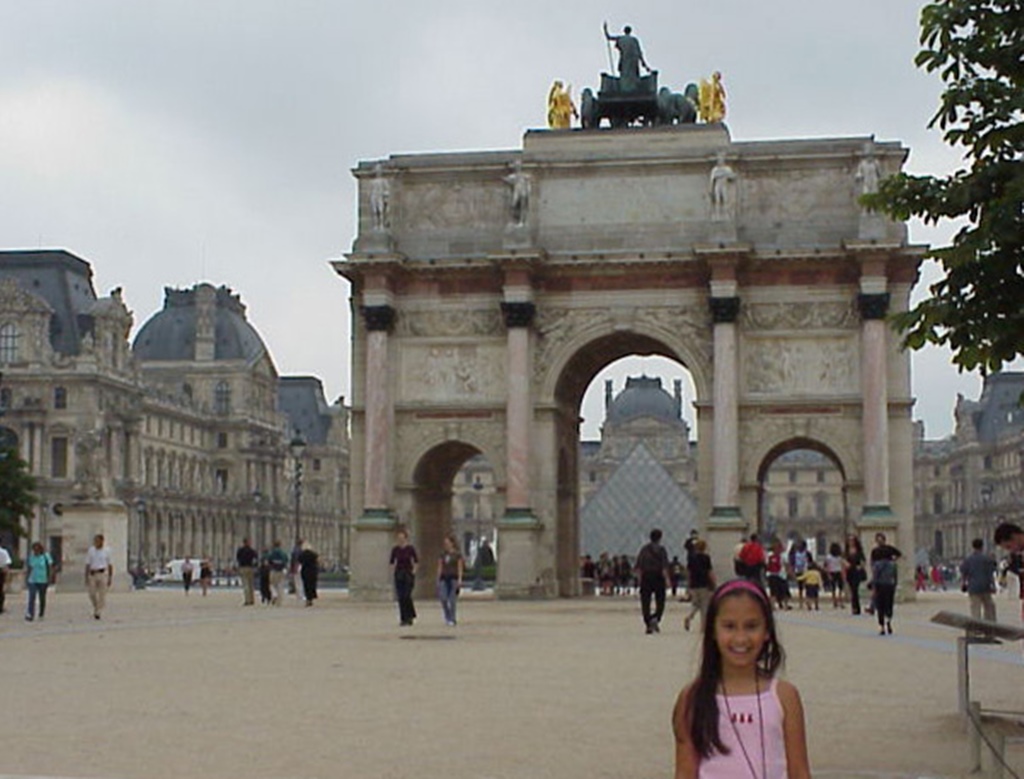The Starhotel Splendid furnishes an American-style breakfast buffet for their guests,
included with the room rate, but the Westin Europa & Regina, despite its priceyness,
does not. So while Philip and Connie were loading up on eggs and bacon and fresh
fruit, Nella and I were combing the narrow passages near our hotel, searching for
places that served any kind of breakfast, of which there weren't very many.
Eventually a tiny place was found that served coffee, fruit juice and croissants.
While all of this was very good (Italians are very serious about their coffee), the
place was too small to have any seating at all, and was in fact only large enough to
hold 6-8 standing customers at a time. So after a small and not-so-relaxed breakfast,
Nella and I moved on to the Starhotel Splendid, where we collected our
belching children and continued to the
Basilica of St. Mark, at the
head of the Piazza San Marco.
St. Mark, also known as Mark the Evangelist, is the patron saint of Venice. A winged
lion is the symbol of St. Mark, and winged lions are seen in many places in Venice.
It seems St. Mark tried to start a church in Alexandia, Egypt, and was martyred for
his trouble in 68 A.D. (apparently being dragged to death). His remains were
entombed there until 828 A.D., when some enterprising merchants from Venice made off
with them (evidently smuggling them out under a layer of pork, which Muslims aren't
allowed to touch) and brought them to Venice (some say the head was left behind in
Alexandria, where it's still celebrated annually).
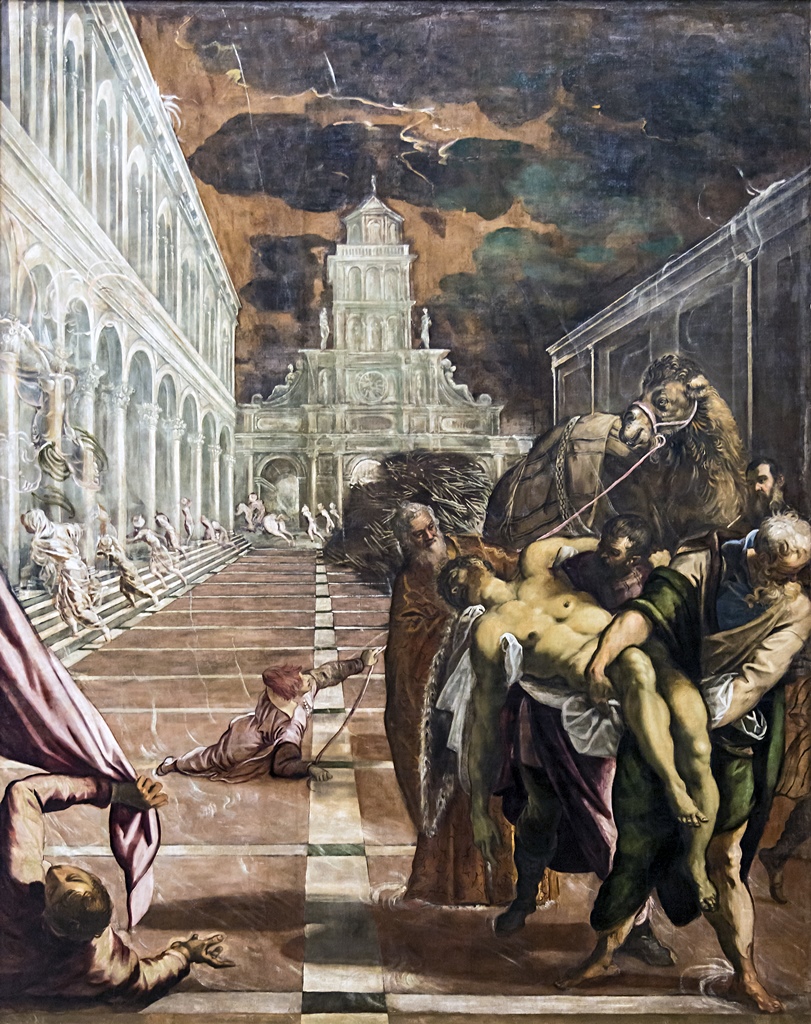
St Mark's Body Brought to Venice, Jacopo Tintoretto (1562-66)
In 832, a basilica was built in Venice to house the remains. This basilica burned
down in 976 and was rebuilt, but then this version was torn down and a more
impressive version 3 was built in the period 1064-94. Over the succeeding
centuries, Venetians on foreign adventures would send or bring back artifacts and
pieces of foreign structures which often found themselves affixed to the façade
of the basilica, and other decorations were added to make the façade grander and
to reflect changes in architectural fashion. The result is a spectacular, busy
and somewhat bewildering combination of styles which commands attention and is
not to be missed.
Visiting the Basilica is a rare bargain in Venice, costing nothing, except for
waiting in a line that can be rather long. And it's possible to make
reservations on-line
for a minimal fee which enable you to bypass this line if you show up at a
particular appointment time. Which is what we did. In fact, we showed up a
little early, giving us a few minutes to peruse the Piazza.
The Piazza San Marco is the center of the Venice Tourism Universe. It's a
long, trapezoidally shaped area which is surrounded on three sides by picturesque
arcades and bordered on the fourth by the Basilica. Near the Basilica is a
323-foot campanile, or bell tower, from the top of which wonderful views
of the city are to be had (more on this in a future page). Next to the Basilica
(and in fact connected to it) is the Doge's Palace, the opulently-decorated
center of Venice government for centuries (more on this later too). On the other
side of the Basilica from the Doge's Palace is a clock tower featuring an
astronomical clock ("destroyed" in the James Bond movie Moonraker) which
shows the hour of the day, the sign of the zodiac and the phase of the moon.
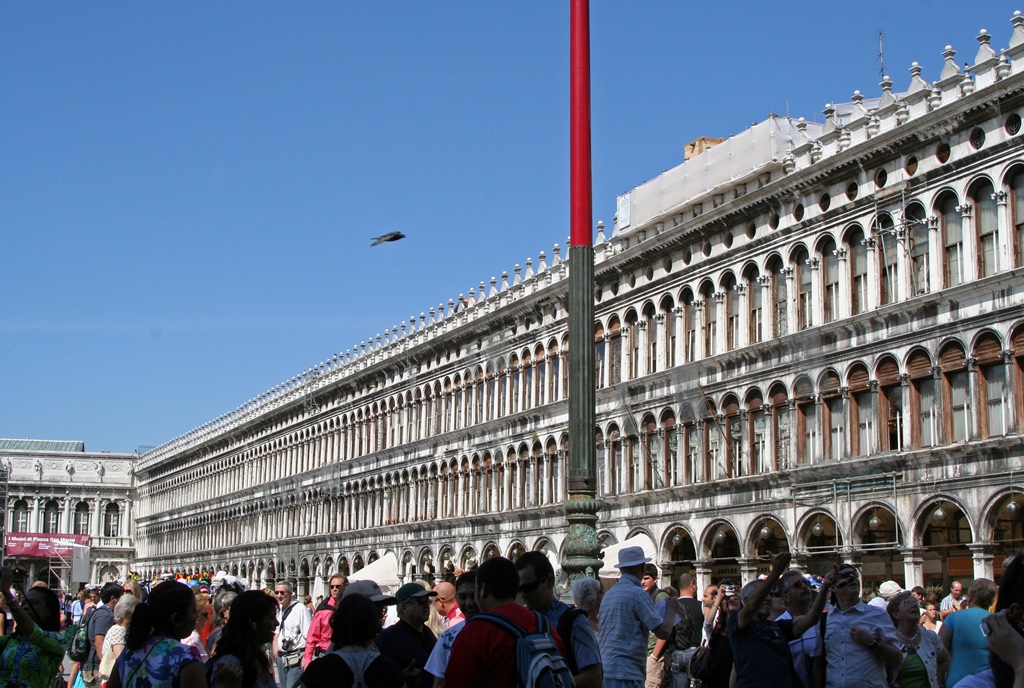
Arcade (Procuratie Vecchie), Piazza San Marco

Piazza San Marco
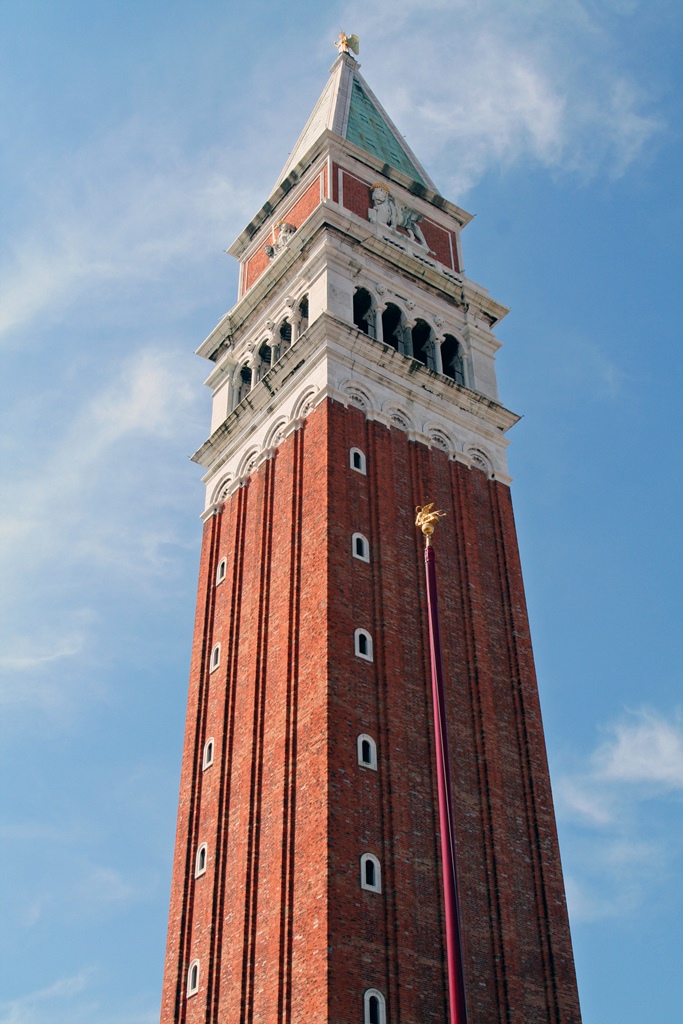
The Campanile
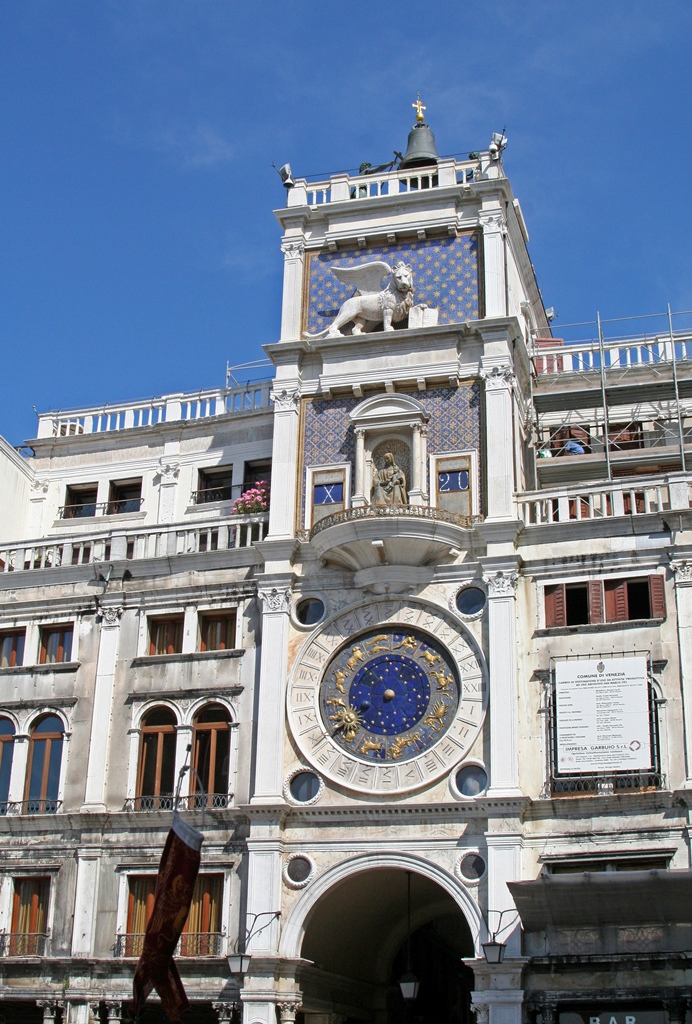
The Clock Tower
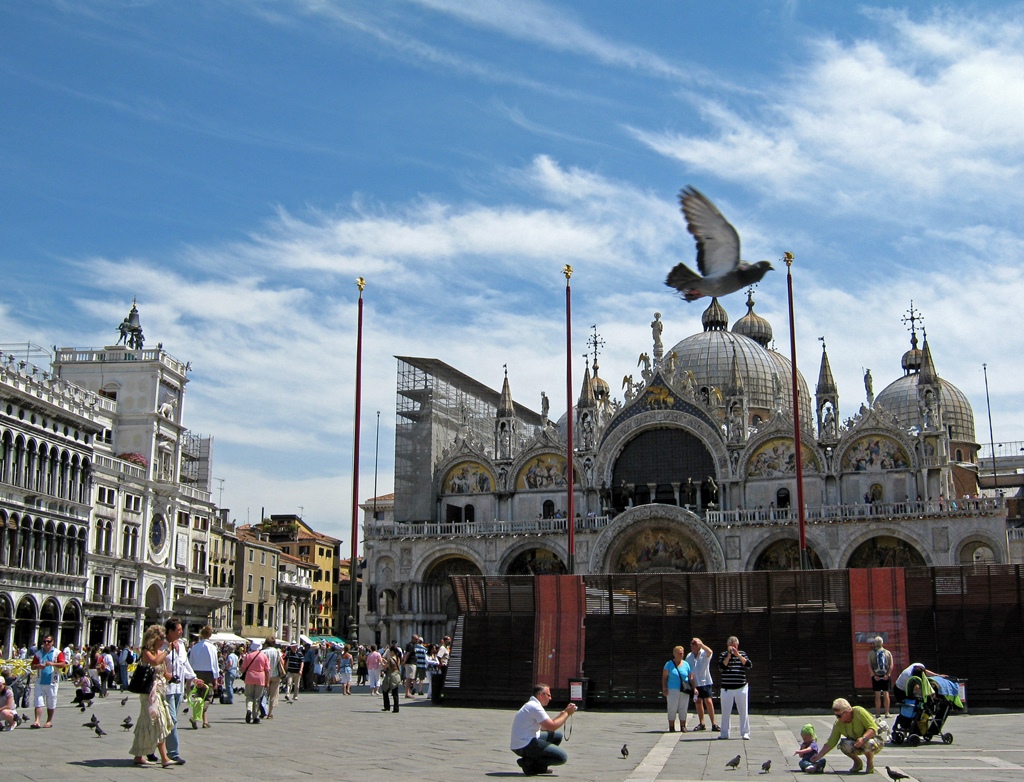
The Basilica
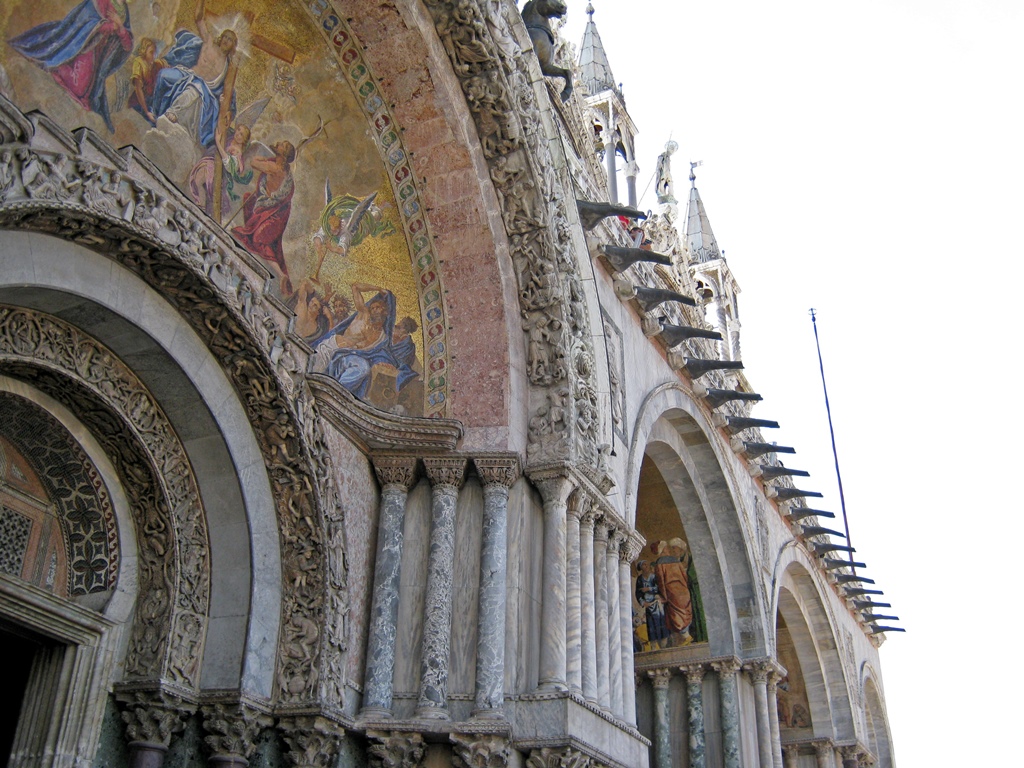
The Basilica (detail)
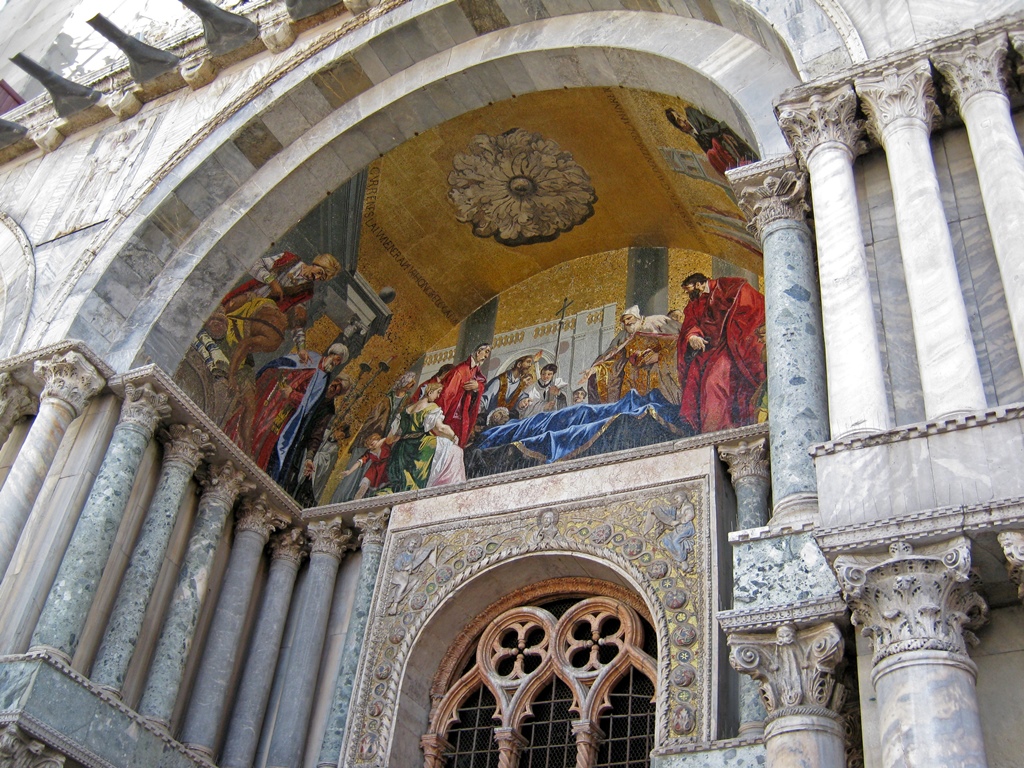
Saint Mark's Body Venerated by the Doge (1728)

The Basilica
On viewing the Piazza, we were struck by a few differences from what we'd seen
before, on a visit nine years earlier. First, there was a fenced-off area surrounding
the campanile. This was apparently for work being done to stabilize the campanile's
foundation. Second, there was a large stage set up at the far end (from the Basilica)
of the Piazza. This must have been for a performance of some kind that took place
after we left the city, as we never saw it in use. And third, there were many fewer
pigeons in the Piazza, compared to the swarms we'd seen on our earlier visit. There
seems to have been an official effort to reduce their presence in the Piazza, as
there were no longer any vendors of pigeon food.
When the time came for us to enter the Basilica, we presented our reservation
confirmation and ourselves and we and walked right in. We were a little worried about
having to check purses and camera bags, as we'd heard they were pretty strict about
taking large bags into the Basilica, but ours were apparently small enough. The
interior of the Basilica is on the dark side and amazing. It's laid out in a Greek
Cross configuration (four equal arms) and is surmounted by five domes. And golden
mosaics are everywhere. Not far from the entrance, we saw a sign with symbols
indicating that a few things weren’t allowed: shorts and sleeveless clothing,
photography, and videography. Looking at our fellow visitors, we saw they were
obeying the dress code (those who didn't were denied entry), but that most of them
were blatantly taking pictures of one kind or another, including flash, and nobody
was telling them not to. Being basically weak individuals, we followed suit. If
all of our friends jumped off a cliff, we probably would too. Anyway, here are some
of the pictures:
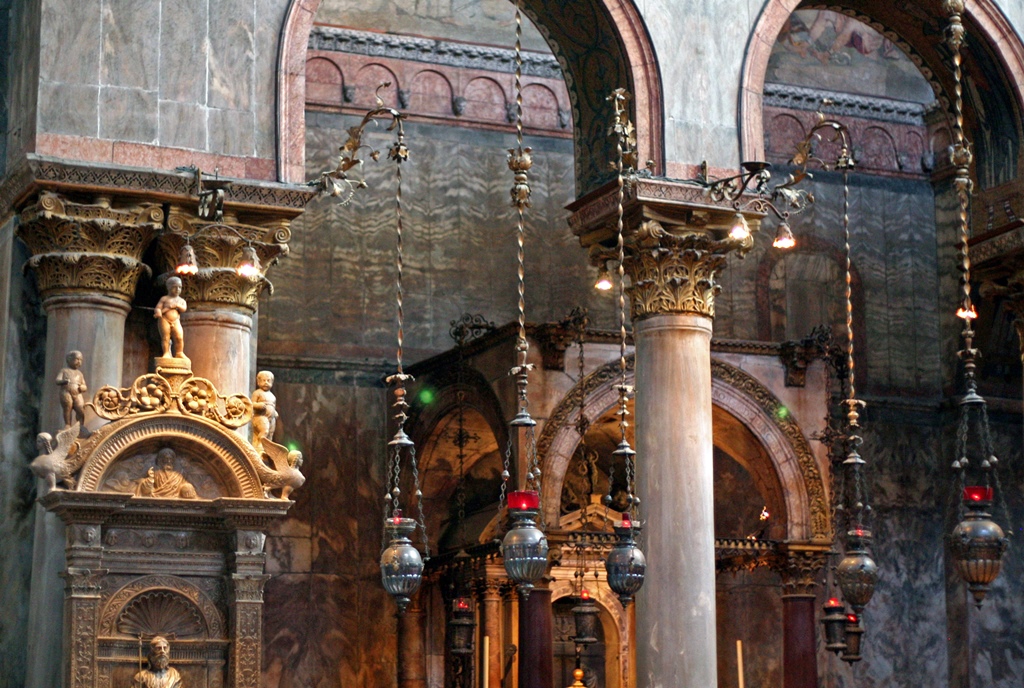
Inside the Basilica

Inside the Basilica

Pentecost and Ascension Cupolas
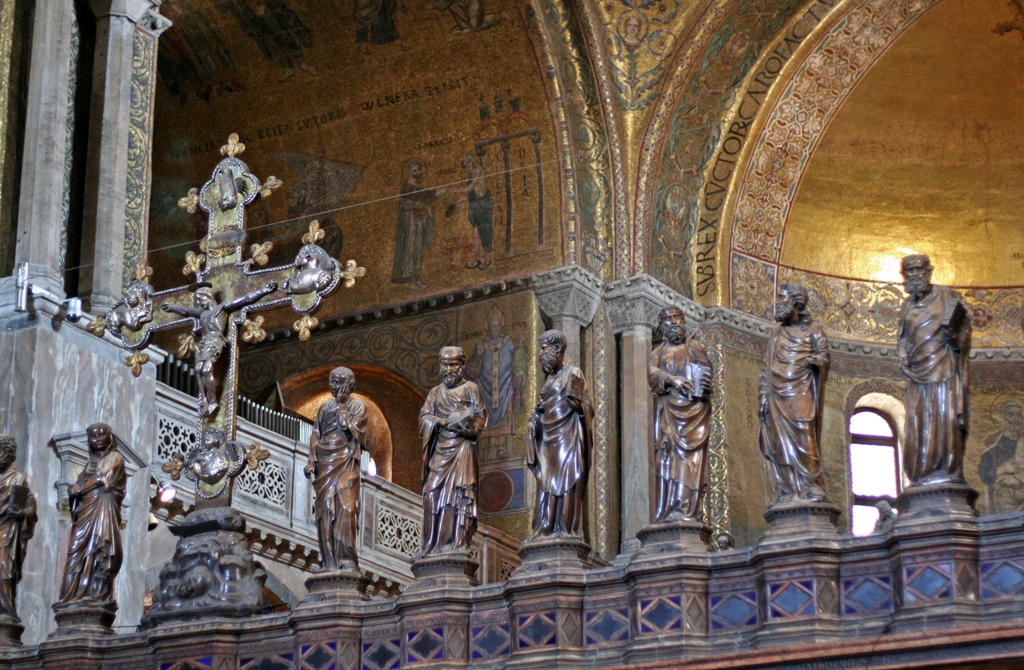
Iconostasis (14th C.)
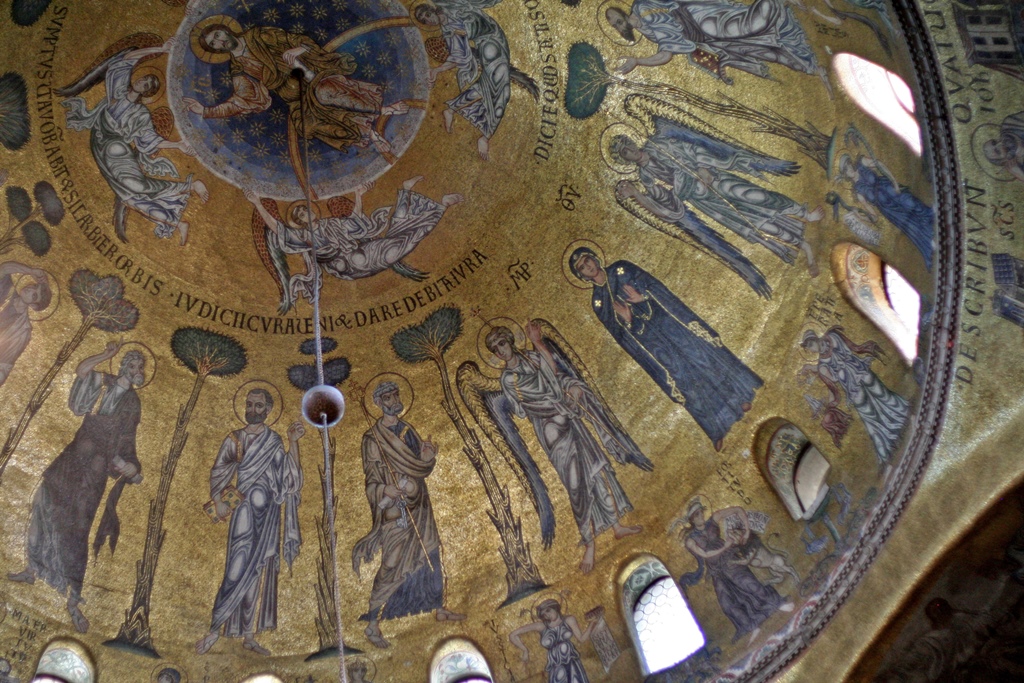
Ascension Cupola

Elaborately Tiled Floor

Iconostasis, Cupolas, Mosaics, Madonna Nicopeia Altar
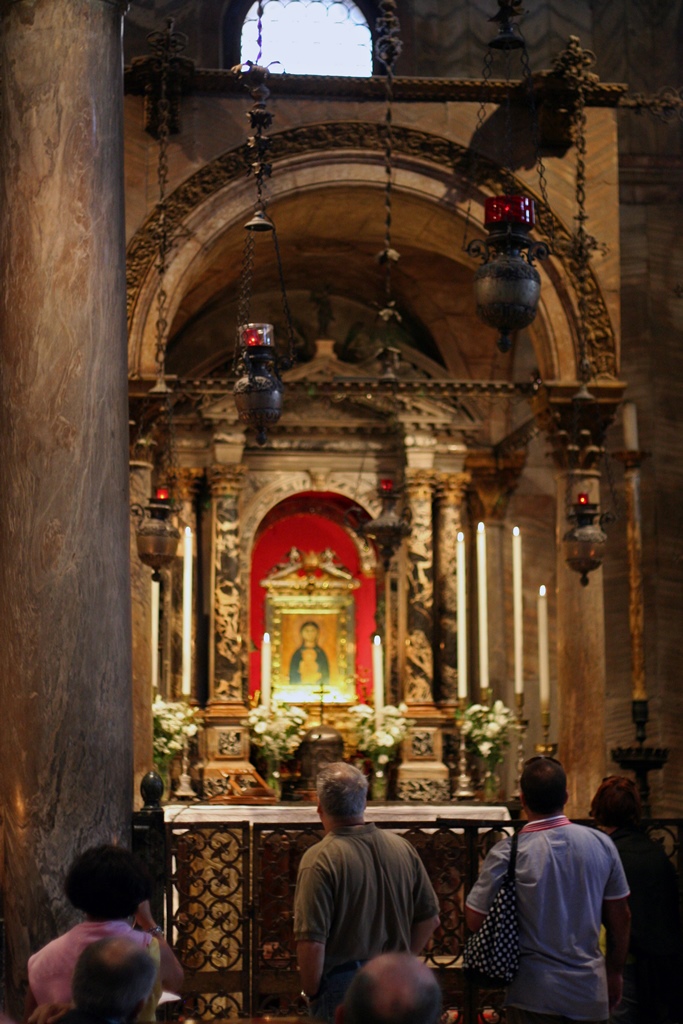
The Madonna Nicopeia Altar
Though entry without reservations to the Basilica is free, there are some things
within the Basilica one can only see for a fee. One is the Pala d'Oro, a
priceless altarpiece consisting of 250 small enamel paintings on gold foil,
studded with a great number of precious stones. We skipped the Pala d'Oro, but we
did pay to go upstairs to see the Basilica Museum (entry to the right on entering
the Basilica).

Basilica Interior from Museum

In the Museum
The museum has fine displays of artwork and vestments, but the main attraction for
us was access to the balcony on the front of the Basilica, from which there are
terrific views of the Piazza.
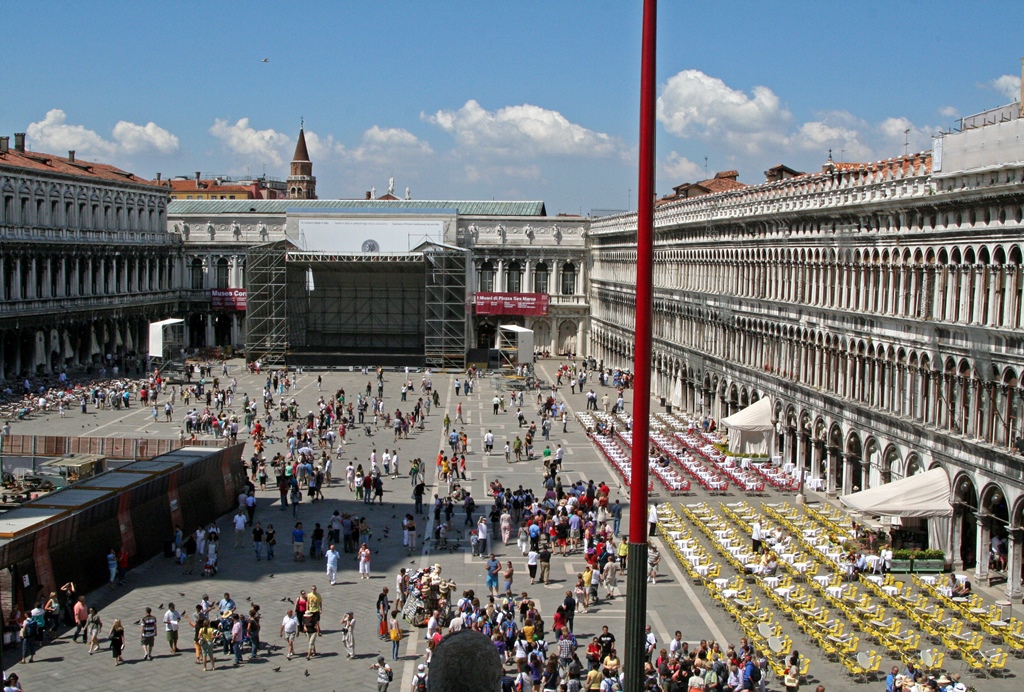
Piazza San Marco

Philip, Clock Tower and Piazza
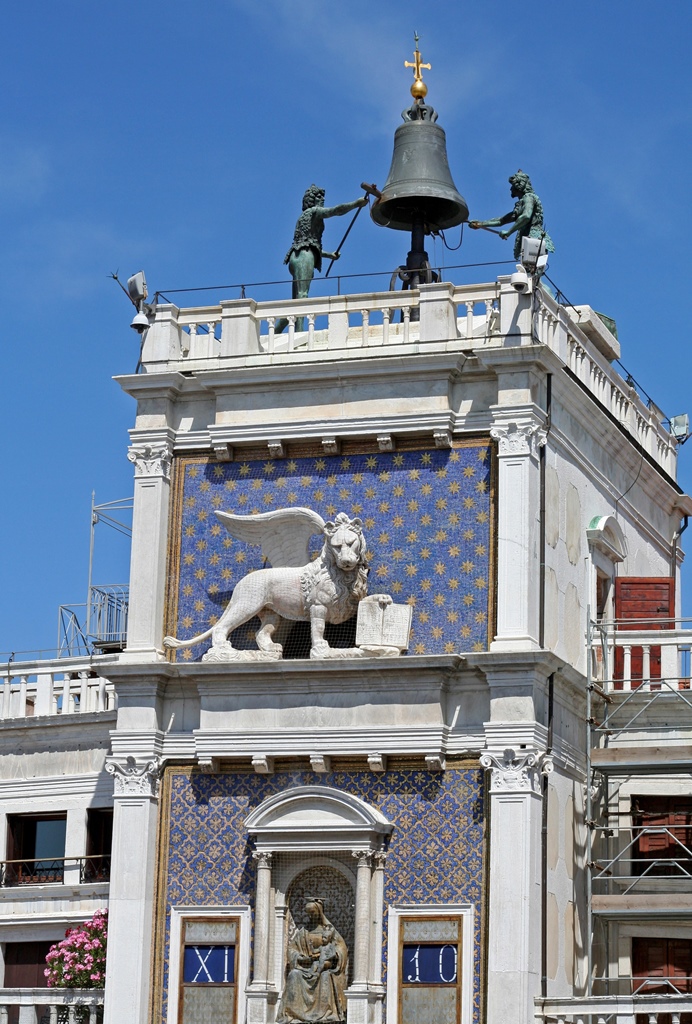
Clock Tower (Upper)
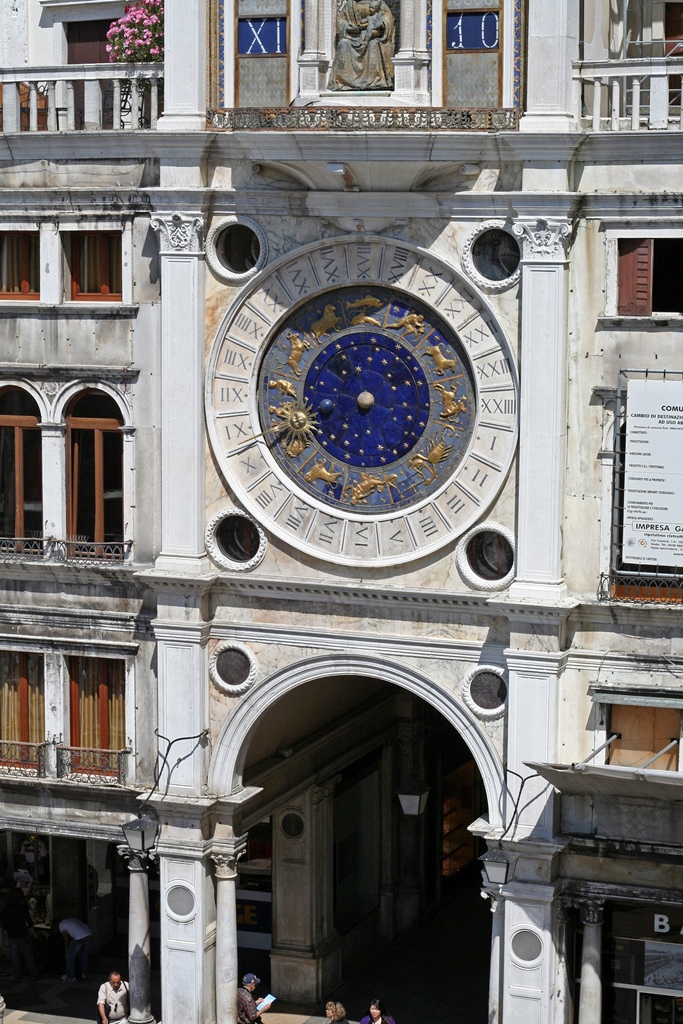
Clock Tower (Lower)
On the end of the balcony facing the Adriatic Sea, one also has a great view
of the Piazzetta, the open area between the Doge's Palace and one of the
buildings enclosing the Piazza San Marco. The Piazzetta features the columns of
St. Mark (the one with the winged lion) and San Teodoro (the other one, with
San Teodoro on top; Venetians consider it unlucky to walk between the columns,
as this was once a spot used for public executions) and a view across the water
to the isle of San Giorgio Maggiore.
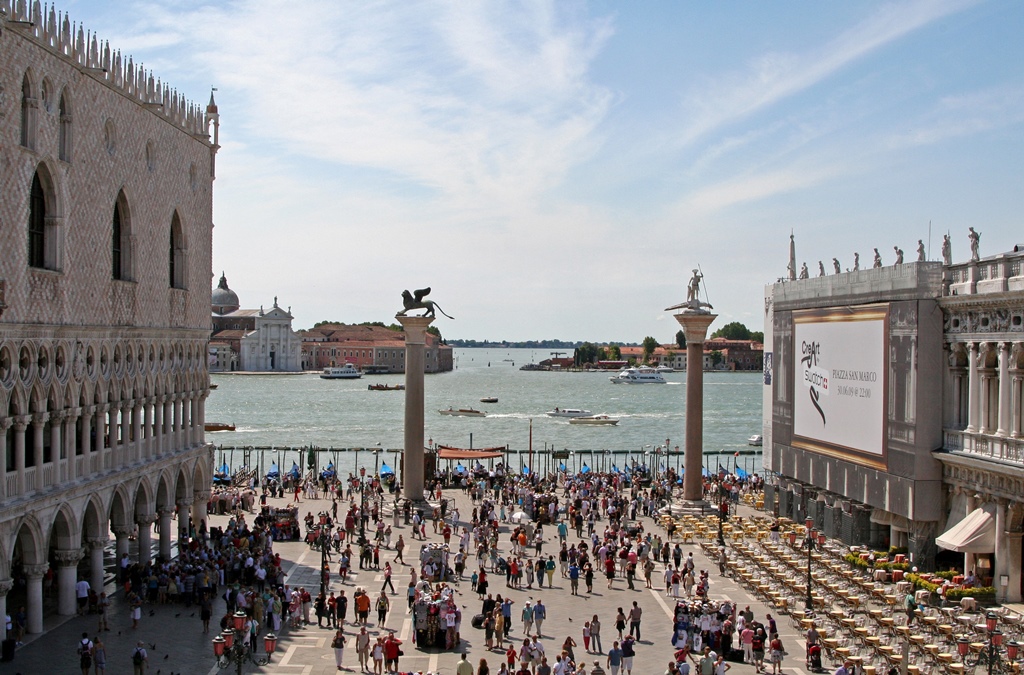
The Piazzetta

The Piazzetta
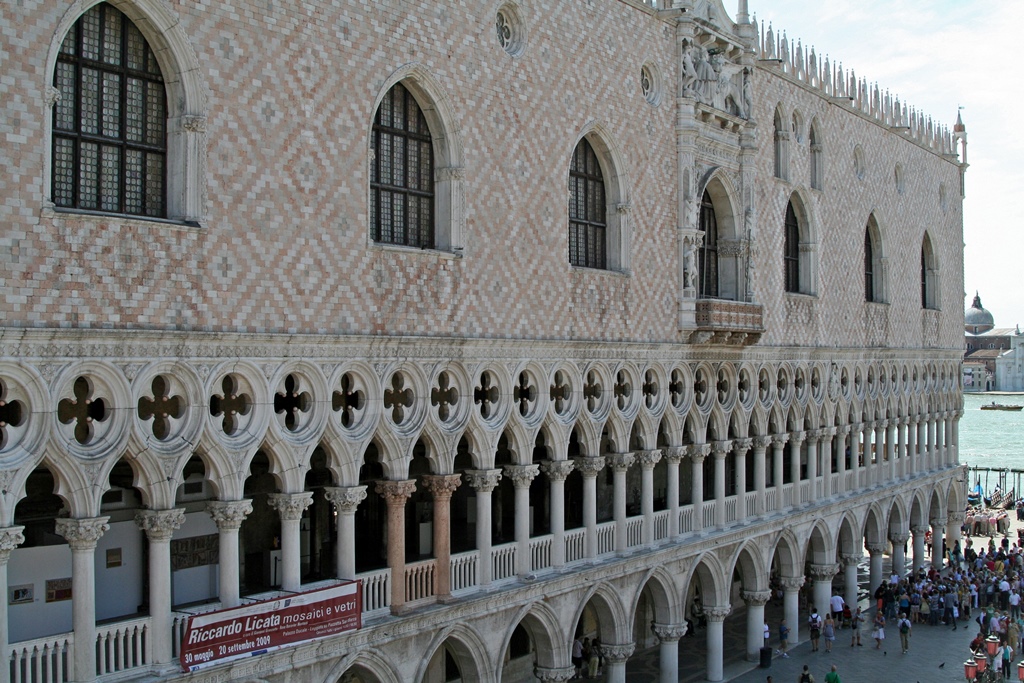
The Doge's Palace
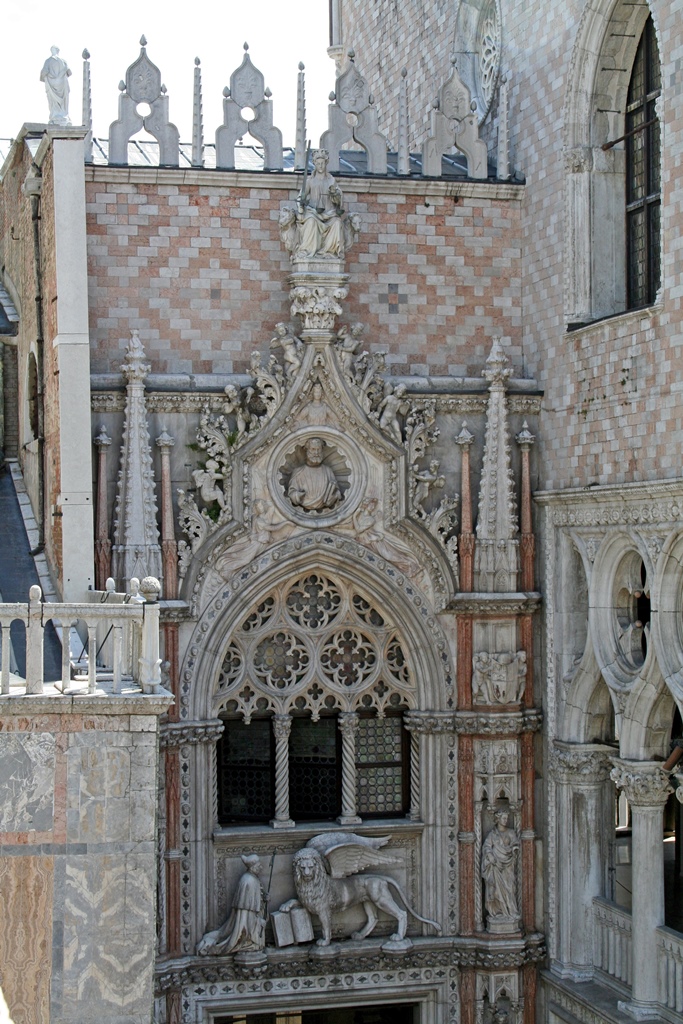
Porta della Carta, Doge's Palace
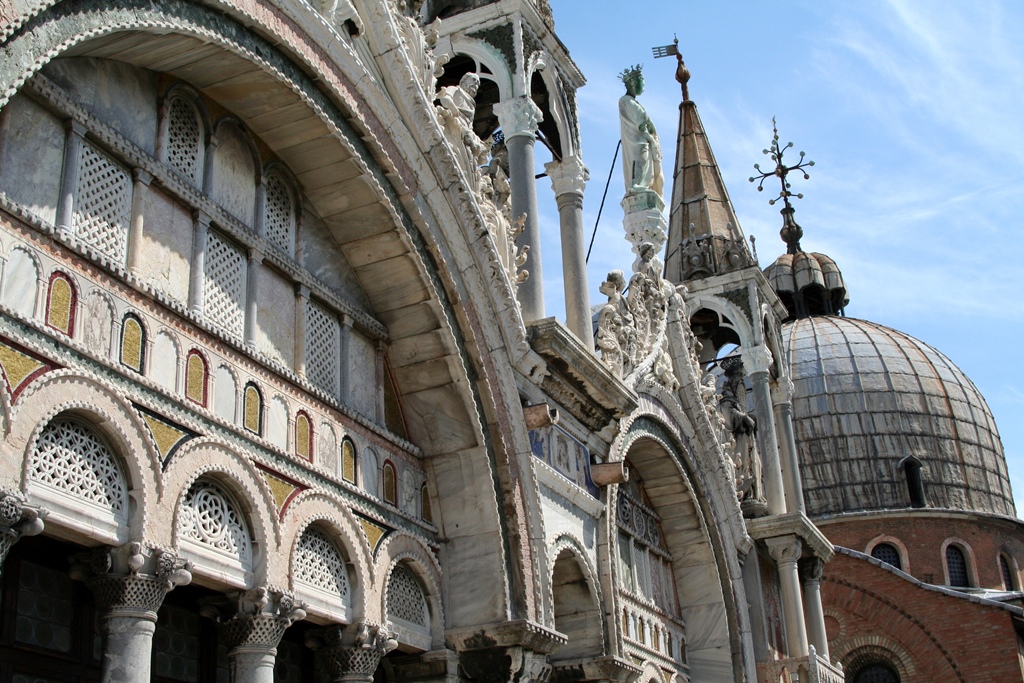
Southern Façade of Basilica
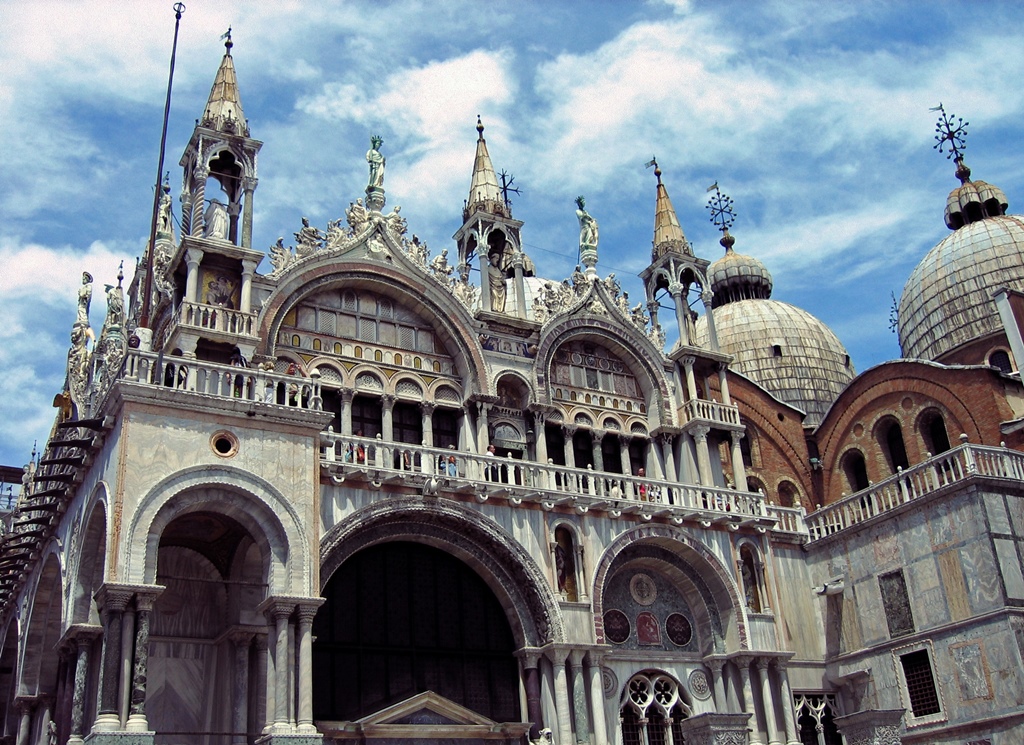
South Façade of Basilica from Piazzetta
The balcony also has close-up views of some of the many Basilica decorations,
including the four life-size bronze horses of St. Mark. These horses originated
in classical antiquity (nobody's quite sure exactly where or when) and somehow
found themselves in Constantinople as part of a monument at the city's Hippodrome
for hundreds of years. They were "liberated" during the Fourth Crusade in 1204
and sent to Venice, where they were installed on the front of the Basilica 50
years later. They remained there until 1797, when Napoleon Bonaparte liberated
them again and sent them off to Paris, where they were eventually perched atop
the Arc de Triomphe du Carrousel, near the Louvre, in 1808.

Campanile, Horses and Mosaics
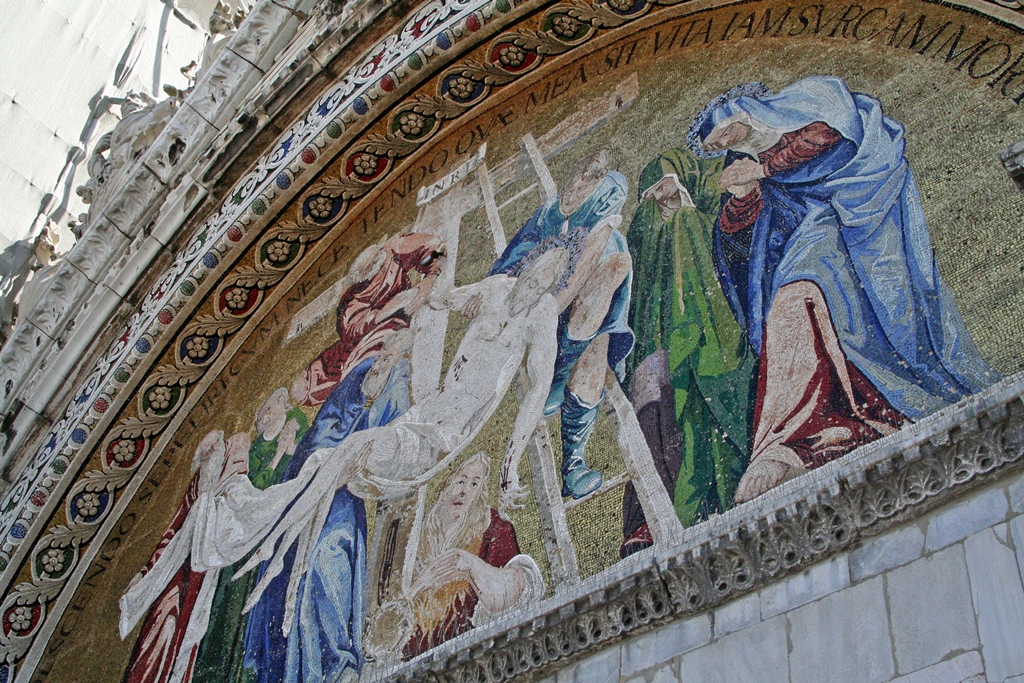
Mosaic - The Deposition (17th C.)
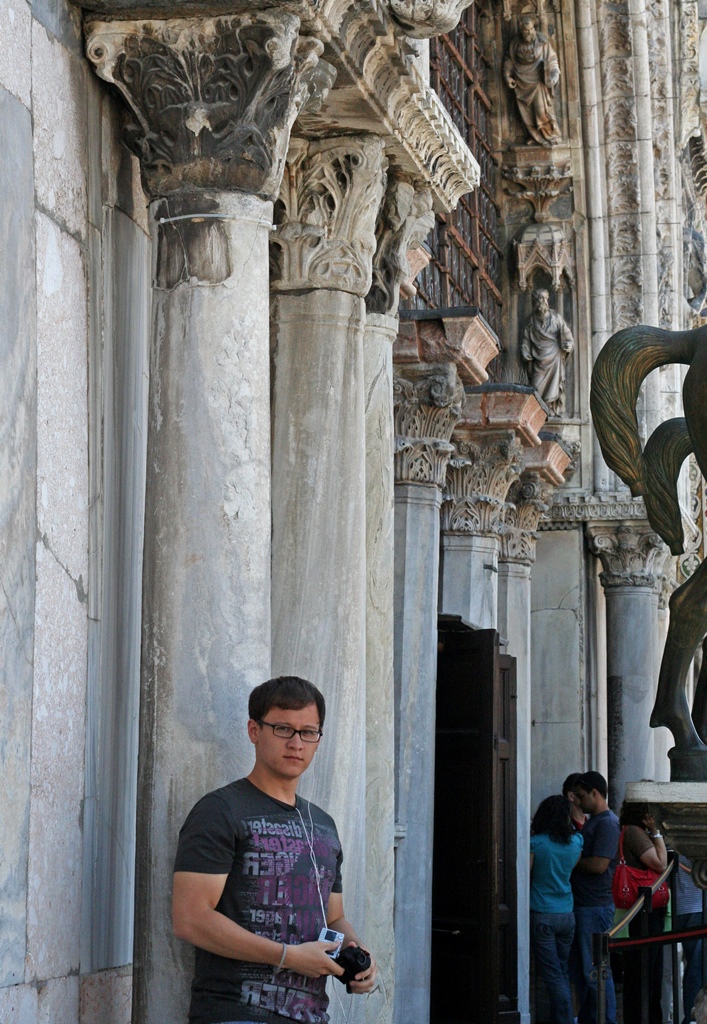
Philip on Balcony
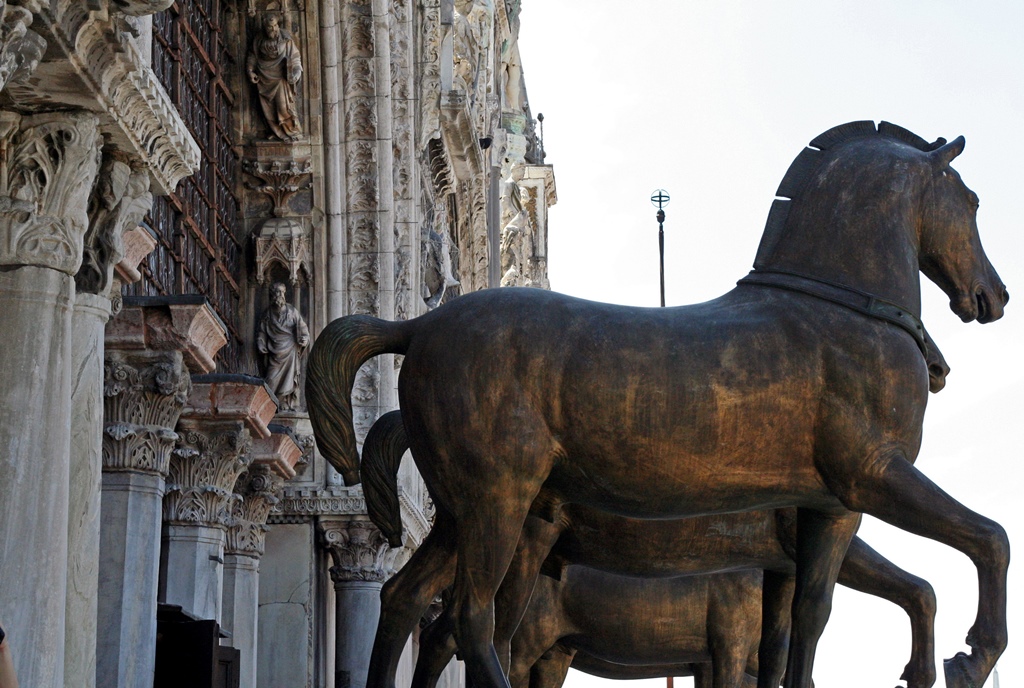
The Bronze Horses
Arc de Triomphe du Carrousel, Paris (2000)
When Napoleon was removed in 1815, so were the horses, and they were returned to
their spots on the front of the Basilica, where they have remained ever since. Or
sort of, as pollution damage forced them to move indoors in the early 1980's, for
their own protection. The horses on the front of the Basilica now are replicas,
but the originals can be seen in the museum. The no-photography rule is actually
enforced in the museum, but there may be a video above in which they accidentally
appear.


































